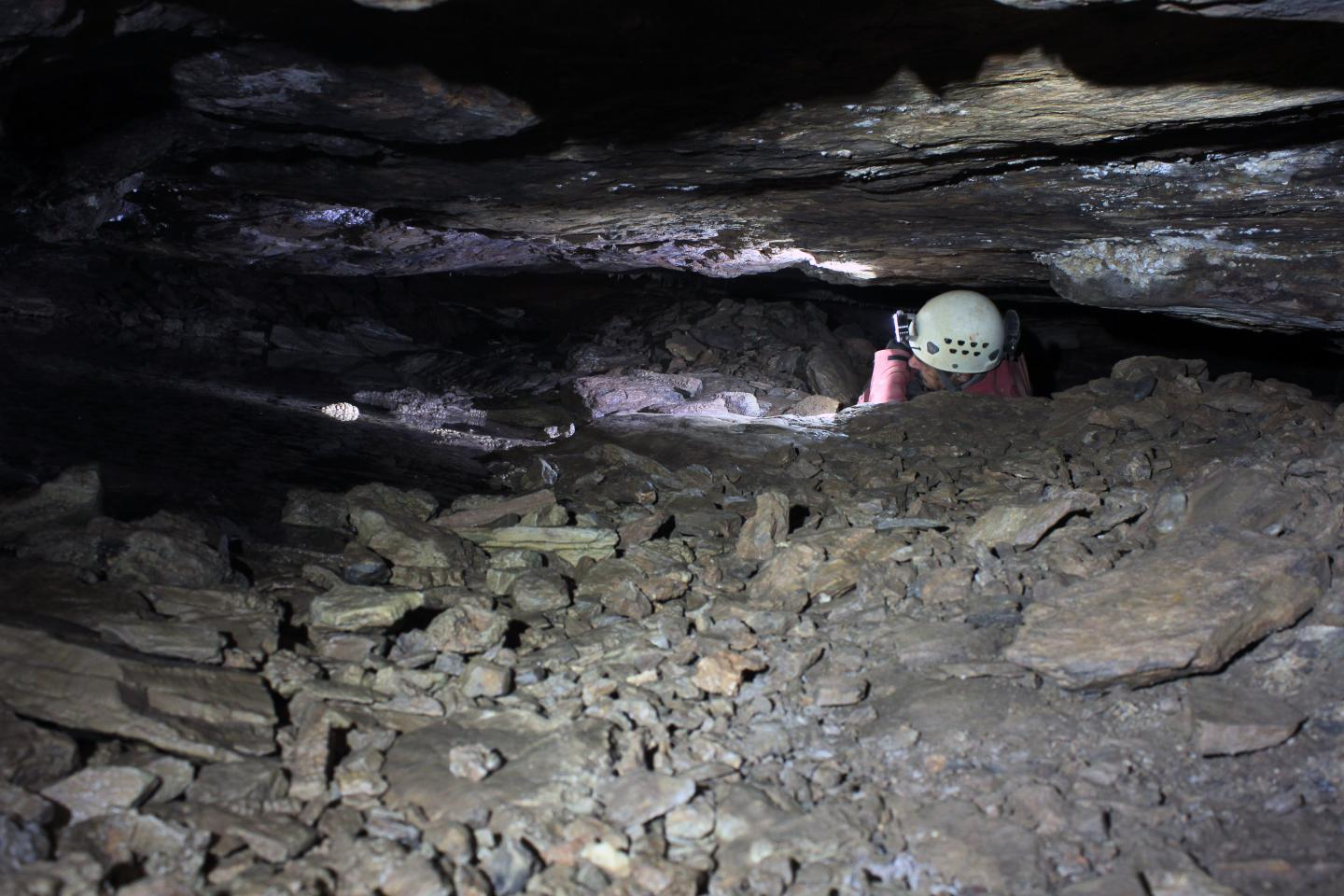A team of mining archaeologists, supervised by Prof. Dr Denis Morin of the University of Lorraine, connected with the UMR National Center for Scientific Research 5608 of Toulouse, has been investigating 5,000 year old silver mine workings in Greece. The scientists have used a drone to locate above-ground installations connected to the mining. It is the first time that such complex mining infrastructure has been studied.

The subterranean investigations are part of a larger archaeological research program on the site of Thorikos, directed by Prof. Roald Docter of Ghent University under the auspices of the Belgian School at Athens, the University of Utrecht and the Ephorate of Eastern Attica.
Denis Morin, commenting on this discovery, said: “Today, it is difficult to imagine the extreme conditions in which the miners had to work in this maze of galleries. A smothering heat reigns in this mineral environment. The progress of the underground survey requires a constant vigilance in this stuffy space where the oxygen concentration must be continually monitored. Tool marks on the walls, graffiti, oil lamps, and crushing areas provide evidence of the omnipresent activity of these underground workers. The hardness of the bedrock and the mineralisation show the extreme working conditions of these workers, for the greater part slaves, sentenced to the darkness and the extraction of the lead-silver ore … Mapping these cramped, complex and braided underground networks, the ramifications of which are sometimes located at several levels, represents a real challenge in scientific terms”. Underground, several phases of activity can be determined from the morphology and the organisation of the mining infrastructure.
The archaeological data gathered and observed during the latest phase of the 2015 campaign, which included pottery and stone hammers made of a volcano-sedimentary rock quarry, suggest a date for the earliest phase of mining activities in the area in the Late Neolithic / Early Helladic: around 3,200 BC. If future research confirms this hypothesis, the chronological framework of mining in the region of Attica and the Aegean world will be profoundly modified. The Classical phase is by far the most perceptible; it is remarkable by the regularity of the sections of divided galleries throughout the whole system. Fragments of pottery and oil lamps, and even a Greek inscription engraved on a wall, testify to the activities in this period. The characteristic features of these particularly well organised mine-workings include conduits cut with pointed tools of quadrangular shape, and cutting of the rock in successive stages.
Resumption of the workings at the end of Classical period (4th century BC) has been dated using the tool marks in the galleries and ceramic remains. Shafts discovered inside this network connect two main mineralisation horizons, and hence there are two extraction levels. Their excavation methods, of perfect geometrical form, executed with millimetre precision, are still under investigation by the archaeologists.
Today, these shafts are only accessible using alpine caving techniques. Some of these abandoned galleries have remained untouched over the last 5,000 years. Others, which are now inaccessible, have been entirely banked up during successive phases of mining. Working their way into these galleries remains difficult for the experienced archaeologists, wearing high-tech equipment, in a stifling atmosphere with temperatures up to 21°C.
The mine that has been discovered in Thorikos is exceptional in its layout and extension. Up to now mining archaeologists working in the Laurion area have not explored such a complex network of galleries and mining infrastructure. These workings show the physical capacities and skills of the ancient miners to exploit these complex ore deposits, and to undertake ore dressing activities outside the mine, from prehistoric times. It testifies to a deliberate mining strategy and to perfect technological and spatial control over the process; an exceptional concentration of methods to extract the silver, and a sophisticated technical system that in its scale is unique within the ancient world.
Already exploited since the 4th / 3rd millennium BC, by the 5th and 4th centuries BC these silver mines constituted the most important mining district of Greece, lying at the basis of Athens’ domination of the Aegean world.
The 2015 underground survey campaign brought new information on the mining techniques developed since the first metal ages in this strategic zone of the eastern Mediterranean. The research that continues not only aims to survey these subterranean remains, but will also permit an understanding of the mining technologies of these early periods, the management of mineral resources, their extraction and processing, as well as the distribution of the end products. These achievements of human ingenuity already foreshadow the much later technological advances of the Middle Ages.
